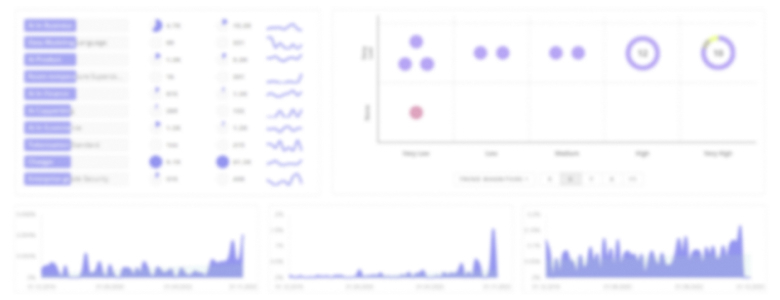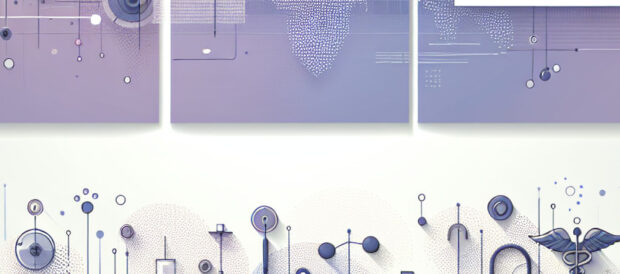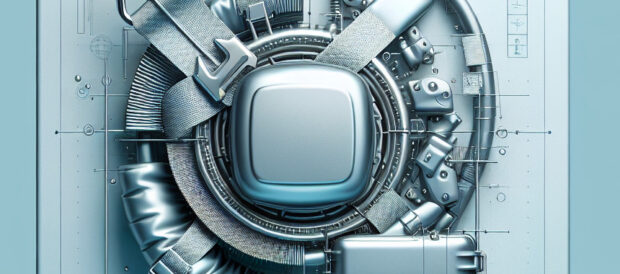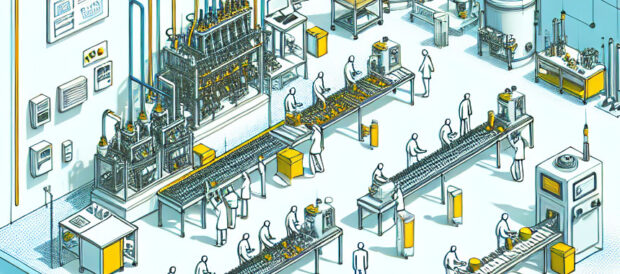
Medical Manufacturing Report
: Analysis on the Market, Trends, and TechnologiesThe medical manufacturing sector is a critical part of the healthcare industry, providing innovative solutions and technologies essential for patient care. This medical manufacturing report reveals that 2.2K companies operate within this domain and the sector is in a maturing stage. This indicates stability and steady growth. The annual growth rates in funding (30.18%), news coverage (2.72%), and a slight decline in new companies (-10.15%) reflect a dynamic but evolving landscape. Investments from various entities, including the European Investment Bank, have contributed to a healthy investment environment, with total funding reaching $2.44 billion and revenues at $26.51 billion. The sector’s significant workforce and increased media presence underscore its importance and potential for job creation and expansion. Major trends in the sector include personalized medicine, patient-centric design, AI integration, and more.
We last updated this report 430 days ago. Tell us if you find something’s not quite right!
Topic Dominance Index of Medical Manufacturing
To gauge the impact of Medical Manufacturing, the Topic Dominance Index integrates time series data from three key sources: published articles, number of newly founded startups in the sector, and global search popularity.
Key Activities and Applications
- Regulatory Compliance: Ensuring that all medical products meet the stringent regulations set by authorities like the FDA (U.S. Food and Drug Administration) or EMA (European Medicines Agency).
- IV Infusion: Development and manufacturing of IV infusion pumps and integrated infusion management systems.
- Quality Control & Assurance: Maintaining high standards in production to ensure that every product is safe, effective, and free of defects. This involves systematic inspections, testing, and validation.
- Post-Market Surveillance: Monitoring the performance of medical products after they are released is important for identifying any potential issues and implementing recalls.
- Comprehensive Services: Provision of comprehensive services covering a wide range of operations and healthcare provider services in the medical device manufacturing sector.
- Specialized Products: Specialization in oncology, pain management, and ultrasound medical device manufacturing.
- Personalization: Personalized lab services for medical additive manufacturing, including biocompatible and mechanically stable bone implants.
Emergent Trends and Core Insights
- Personalized Medicine: The shift towards personalized healthcare is enabling customized medical devices and treatments.
- Sustainability Practices: There is a growing emphasis on reducing the environmental footprint of medical manufacturing by using biodegradable materials, minimizing waste, and adopting energy-efficient processes.
- Patient-Centric Design: Medical devices are increasingly being designed with the end-user in mind, improving usability and comfort.
- AI and Data Analytics: They enhance decision-making in medical manufacturing, from predicting demand to optimizing production processes and improving quality control.
- Collaborative Ecosystems: There's a trend towards greater collaboration between manufacturers, healthcare providers, and patients to accelerate innovation.
Technologies and Methodologies
- 3D Printing: Allows for the rapid prototyping and production of complex medical devices and implants with customized shapes and sizes, particularly in orthopedics and dental applications.
- Robotics & Automation: Robotics and process automation solutions optimize precision tasks like assembly, packaging, and surgery while enhancing efficiency and quality.
- Bioprinting: A specialized form of 3D printing that uses cells and biomaterials to create tissue-like structures for use in regenerative medicine.
- Nanotechnology: Used for developing effective drug delivery systems, enhanced imaging agents, and creating nanoscale medical devices.
- Digital Twins: Digital replicas of manufacturing systems simulate, analyze, and optimize the production process before implementing changes in the real world.
- Advanced Materials: The development and use of novel materials, such as bioresorbable polymers and shape-memory alloys. They improve the functionality and safety of medical devices.
- Connected Devices: Use of IoT to enhance equipment monitoring, predictive maintenance, and supply chain management. This, in turn, enables more efficient operations.
Medical Manufacturing Funding
A total of 220 Medical Manufacturing companies have received funding.
Overall, Medical Manufacturing companies have raised $2.3B.
Companies within the Medical Manufacturing domain have secured capital from 483 funding rounds.
The chart shows the funding trendline of Medical Manufacturing companies over the last 5 years
Medical Manufacturing Companies
Enhance your understanding of market leadership and innovation patterns in your business domain.
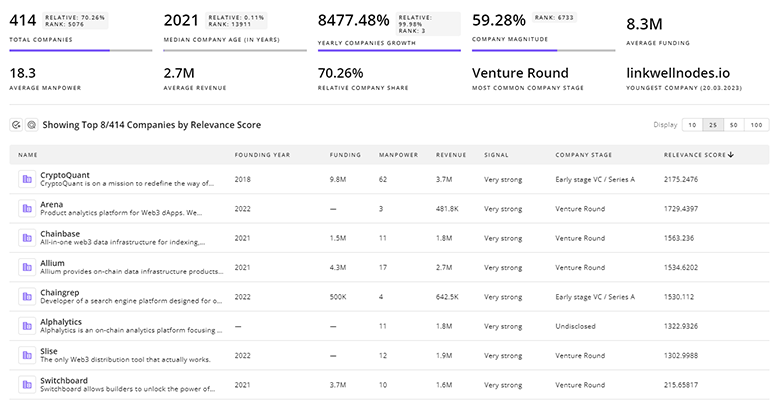
2.2K Medical Manufacturing Companies
Discover Medical Manufacturing Companies, their Funding, Manpower, Revenues, Stages, and much more
Medical Manufacturing Investors
TrendFeedr’s Investors tool offers comprehensive insights into 254 Medical Manufacturing investors by examining funding patterns and investment trends. This enables you to strategize effectively and identify opportunities in the Medical Manufacturing sector.
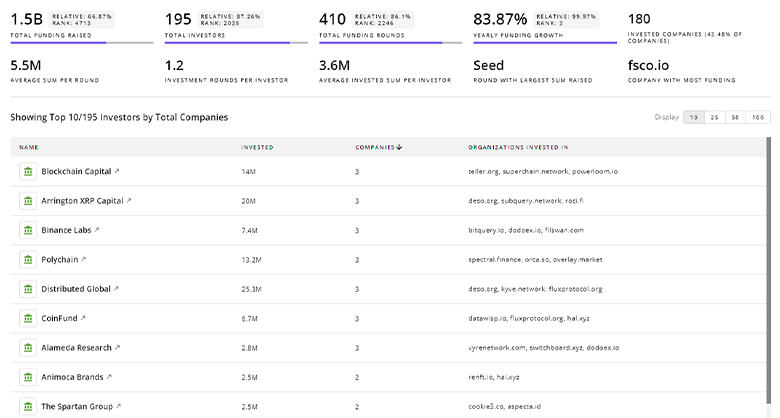
254 Medical Manufacturing Investors
Discover Medical Manufacturing Investors, Funding Rounds, Invested Amounts, and Funding Growth
Medical Manufacturing News
TrendFeedr’s News feature provides access to 2.1K Medical Manufacturing articles. This extensive database covers both historical and recent developments, enabling innovators and leaders to stay informed.
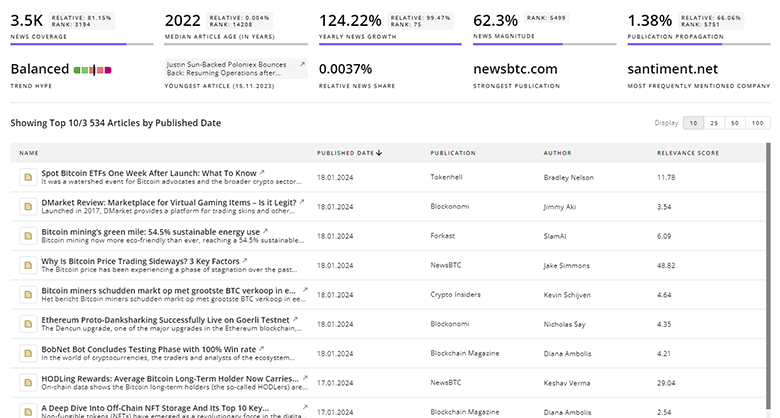
2.1K Medical Manufacturing News Articles
Discover Latest Medical Manufacturing Articles, News Magnitude, Publication Propagation, Yearly Growth, and Strongest Publications
Executive Summary
The medical manufacturing sector stands as a vital contributor to the healthcare industry. The sector's maturity and diverse range of activities and applications indicate its significance in the business landscape. Continued investment, innovation, and collaboration are crucial for advancing the sector and addressing the healthcare industry's needs. With substantial funding, revenue growth, and a considerable workforce, the medical manufacturing sector is poised for further expansion and innovation.
We value collaboration with industry professionals to offer even better insights. Interested in contributing? Get in touch!
